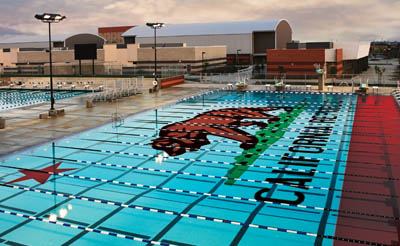After several months of negotiations, the California pool and spa industry and government officials have overcome major roadblocks to passing an updated commercial construction code.
“We definitely had safety at the top of our list across the board,” said David Peterson, an industry member who has worked extensively on the negotiations. “So it was a very positive thing for the consumer and the industry.”
Early this year, the California industry and its lobbyist, SPEC, learned the state’s Public Health Department had been undertaking an overhaul of Title 24, the state code addressing commercial construction. SPEC studied the language being developed and found several points of contention. After months of going back and forth, the two parties have come into basic agreement about four key issues. SPEC plans to revisit other issues in the next revision process, expected to begin early next year.
One of the biggest points of disagreement has been settled. California has long required skimmer equalizer lines on all commercial pools to prevent the pumps from burning out. Industry members objected, saying the lines introduce another suction entrapment hazard into a pool, which outranks the risk of damaged pumps. At first, the Public Health Department resisted any change, but now it has agreed to make skimmer equalizer lines optional. If used, the lines must be connected to another skimmer, main drain or a backup device.
“If it’s there, it needs to be set up as though it were a suction outlet,” said Peterson, also president of Watershapes Consulting in San Diego. “So it either has to be split or unblockable, or treated like a single blockable.”
Another safety issue concerned chemicals. Currently, all commercial pools and spas must have chemical feeders; however, no automation is required. Industry reps believe this technology should be required so chemical feeders will respond to the water’s needs, rather than feeding continuously or at set intervals. The parties have agreed to mandate ORP and pH controllers on all new pools and spas, as well as those undergoing renovation or repair work that requires a permit.
“That’s probably a less costly upgrade than any of the VGB renovations,” Peterson said. “In terms of safety, it’s probably even more important because more people are hurt by bad chemistry every year.”
On the other hand, the Public Health Department was seeking to make codes relating to restrooms more stringent. It originally had planned to require that every commercial pool, both new and existing, have a public restroom within 100 feet of the water. Previously the distance was 300 feet. SPEC officials and professionals have negotiated an agreement retaining the 100-foot requirement for new pools and spas and those undergoing sufficient renovation to require a permit. Existing pools and spas not being renovated can remain as is.
Finally, SPEC convinced the Public Health Department to leave current lighting codes untouched. Originally, officials sought to specify the number of foot candles of light required on decks. The industry disagreed with that approach, saying each installation is different and the number of foot candles dwindle with time. The parties have agreed to maintain the current language, which states that decks must be lit well enough so that users can identify hazards.
It is hoped the new language will be finalized by the end of 2011 and go into effect in early 2012.
Once this version passes, industry reps expect to begin negotiating for other changes, the biggest being to allow commercial pools to go drainless. “[Main drains] don’t actually do anything, and they’re a safety hazard that we don’t need,” Peterson said. “There are many pools out there that still need drains. We understand that. But we can design pools without main drains.”
These professionals also hope to address the requirements on sprayparks, seeking to allow ozone and alter how ultraviolet systems are to be installed.
California and industry officials also are gearing up to rework Title 22, the code affecting how commercial pools must be operated. Some in the industry hope the code, which also has gone untouched for some years, will be changed to allow certain new technologies and specify how they should be used.



